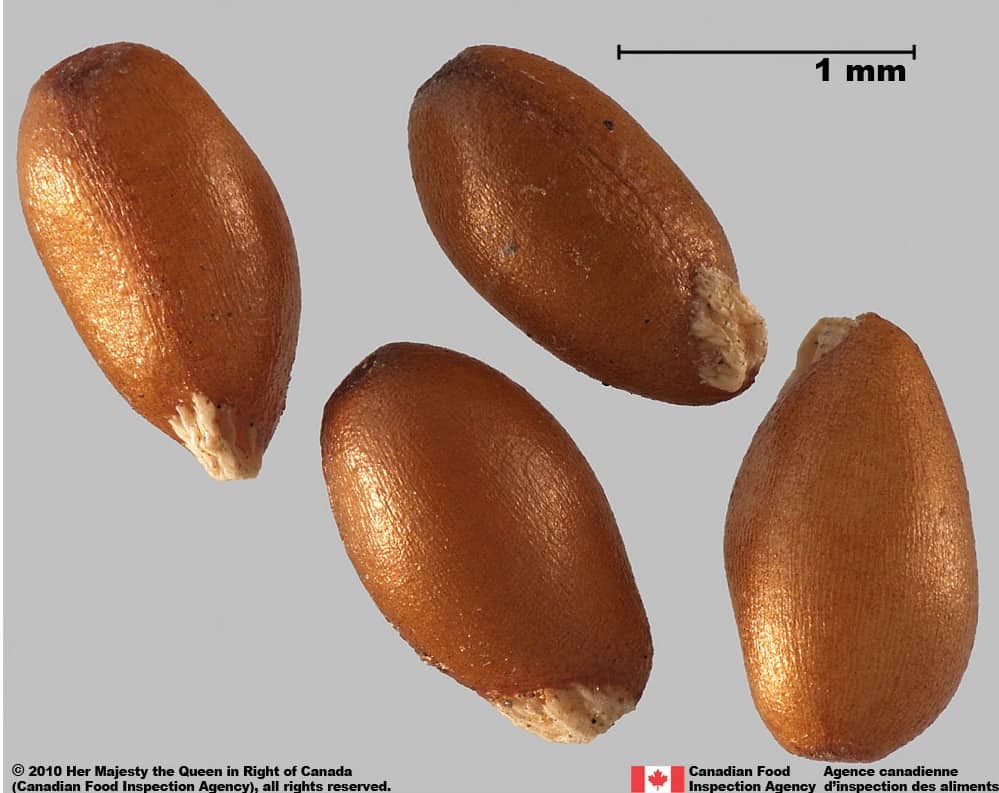Viola arvensis
Explore More :
Explore plus :
Overview
Aperçu
Regulation :
Remarques Réglementation:
- Quarantine lists of countries e.g. India *may be updated without notice
Regulation Notes:
On quarantine lists of countries e.g. India*.
*Quarantine lists of countries may be updated without notice.
Distribution :
Répartition :
This species is native to Europe and parts of western Asia and northern Africa (USDA-ARS 2017). It was introduced to eastern Asia (Taiwan), Australia, New Zealand, North America and South America (Bolivia, Ecuador) (efloras 2017; USDA-ARS 2017). In the United States, it is present in most eastern as well as Pacific states, being most common in north-eastern states (USDA-ARS 2017).
Habitat and Crop Association :
Habitat et Cultures Associées :
Field violet occurs in annually disturbed areas, cultivated fields, pastures, lawns and roadsides (Doohan and Monaco 1992; Darbyshire 2003).
Economic Use, cultivation area, and Weed Association :
Utilisation économique, zone de culture et association de mauvaises herbes :
Duration of Life Cycle :
Durée du cycle vital:
Annual
Dispersal Unit Type :
Type d’unité de dispersion :
Seed
General Information
RENSEIGNEMENTS GÉNÉRAUX
Many factors make this species problematic in cultivated fields including: being self -fertile, prolific seed production, extended seed longevity, extended emergence, partial shade tolerance and herbicide tolerance (Doohan and Monaco 1992).
.Identification
Identification
-
Seed
Size
- Seed length: 1.3 – 2.1 mm (average: 1.7 mm); width: 0.7 – 1.0 mm (average: 0.8 mm)
Shape
- Seed is egg-shaped and circular in cross-section
Surface Texture
- Seed surface is slightly wrinkled
Colour
- Slightly shiny yellow to medium brown with pale tissue at one end, and a darker longitudinal raphe
- The broad end of the seed has a dark spot

Field violet (Viola arvensis) seeds





Identification Tips
CONSEILS POUR L’IDENTIFICATION
Additional Botany Information
AUTRES RENSEIGNEMENTS BOTANIQUES
Similar Species
ESPÈCES SEMBLABLES
Similar species are based on a study of seed morphology of various species, and those with similar dispersal units are identified. The study is limited by physical specimen and literature availability at the time of examination, and possibly impacted by the subjectivity of the authors based on their knowledge and experience. Providing similar species information for seed identification is to make users aware of similarities that could possibly result in misidentification.
Viola tricolor (wild pansy)
Wild pansy seeds are a similar narrow ovate shape, wrinkled surface, yellow to medium brown colour with a dark raphe and pale tissue at the narrow end.
Wild pansy seeds are generally larger (average length: 1.9 mm; average width: 0.9 mm) and the surface tends to be bubbled. The rest of the seed features are similar when compared to field violet.
Click to select species
Cliquez pour sélectionner les espèces

Viola tricolor
Comparison Window
Fenêtre de comparaison
MAIN SPECIES
ESPÈCES PRINCIPALES
Viola arvensis

Viola arvensis
Violaceae
Field violet (Viola arvensis) seeds
MAIN SPECIES
ESPÈCES PRINCIPALES
Viola arvensis

Viola arvensis
Violaceae
Field violet (Viola arvensis) seed
MAIN SPECIES
ESPÈCES PRINCIPALES
Viola arvensis

Viola arvensis
Violaceae
Field violet (Viola arvensis) seed
MAIN SPECIES
ESPÈCES PRINCIPALES
Viola arvensis

Viola arvensis
Violaceae
Field violet (Viola arvensis) seeds
MAIN SPECIES
ESPÈCES PRINCIPALES
Viola arvensis

Viola arvensis
Violaceae
Field violet (Viola arvensis) capsule (opened)
SIMILAR SPECIES
ESPÈCES SEMBLABLES
Viola tricolor

Viola tricolor
Violaceae
Wild pansy (Viola tricolor) seeds
Need ID Help?
Besoin d’aide pour l’identification?
Reference(s)
Référence(s)
Darbyshire, S. J. 2003. Inventory of Canadian Agricultural Weeds. Agriculture and Agri-Food Canada, Research Branch. Ottawa, ON.
Doohan D.J. and Monaco, T.J. 1992. The Biology of Canadian weeds. 99. Viola arvensis Murr. Canadian Journal of Plant Science 72: 187-201.
eFloras. 2017. Electronic Floras. Missouri Botanical Garden, St. Louis, MO & Harvard University Herbaria, Cambridge, MA., http://www.efloras.org Accessed August 25, 2017.
Flora of North America (FNA) Editorial Committee, eds. 1993+. Flora of North America North of Mexico [Online]. 22+ vols. New York and Oxford. Accessed December 29, 2022.
Global Biodiversity Information Facility (GBIF) Secretariat. 2022. https://doi.org/10.15468/39omei Accessed via https://www.gbif.org/species/5331235 Accessed December 29, 2022.
U.S. Department of Agriculture-Agricultural Research Services (USDA-ARS). 2017. Germplasm Resources Information Network (GRIN), https://npgsweb.ars-grin.gov/gringlobal/taxon/taxonomysearch Accessed April 25, 2017.




